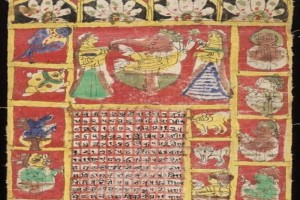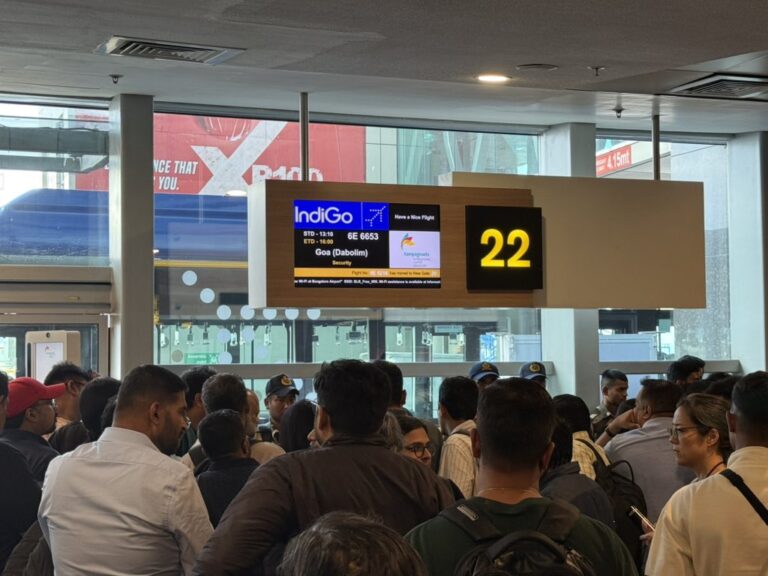
The intricacies of Hindu calendar– Part 1
 By Amit Srivastava
By Amit Srivastava
A lunar calendar in India has 13 months every third year
The year 2020 has 13 months in the Indian calendar instead of the regular 12 lunar months. This additional month is a special feature of the Indian calendar popularly known as the Hindu calendar worldwide. This additional month is called the Adhik Maas, or Purushottam Maas. This year the period from September 18 to October 16 is a special 13th month or Adhik Maas. This is done every two and a half years to adjust the solar and lunar calendars . Every lunar month has one Sankranti (movement of Sun from One Rashi/Zodiac to another).
This month is considered inauspicious for marriages, Mundan ceremony, Grihpravesh etc but very important for lifting oneself spiritually by practices like meditation, chanting , fasting , prayers, charity and special rituals.
Since the sun does not cross into a new Rashi at this time, the preceding Lunar month is extended by another 30 days of Adhik Maas. As shown in the following table, this year the Ashwin lunar month is getting extended by another 30 days of Adhik Maas.
After completion of Adhilk Maas on October 16, the second half of the Ashwin month will continue with start of Navaratra festivities.
|
Month |
Start Date |
End Date |
Paksha |
|
Ashwin |
September 3 |
September 17 |
Krishna Pakhsa |
|
Ashwin Adhik |
September 18 |
October 1 |
Shukla Paksha |
|
Ashwin Adhik |
October 2 |
October 16 |
Krishna Paksha |
|
Ashwin |
October 17 |
October 31 |
Shukla Paksha |
The core of the Hindu calendar is lunar for day to day calculations but it works within the solar cycle framework. Hence the Hindu calendar is called the lunisolar calendar
This period where an additional month is inserted is also called Mal Maas (Mal means Toxins) because it is the time to discard toxins from body and mind and attain purification. It has a special time to make efforts for one’s spiritual progress.
The Complexity of the Hindu Calendar
One of the most striking features of the Hindu calendar system is its intricacy. It offers a multi-dimensional method of structuring time, combining information about lunar days, solar days, lunar months, solar months, the movements of the Sun and the Moon in relation to stellar constellations, and other astronomically defined time spans. This makes the Hindu calendar vastly more complex than the western calendar, which is built around only two basic units of time: solar days and solar years.

The Vedic calendars takes into account 5 Angas or parts of information.
- Lunar Day ( Tithi) – based on complicated lunar movements, good for rituals
the start and end time for tithi varies over the seasons and over the years
- Solar Day ( Diwas) – From one sunrise to another
- Asterism ( Nakshatra)
- Planetary joining ( Yoga) – combination of longitude and latitude
- Astronomical period ( Karanam)- It is half of Tithi. the time required for the angular distance between the sun and the moon to increase in steps of 6° starting from 0°.
Because of these 5 factors the Vedic calendar is also called a Panchangam.
Using all these factors results in extremely precise calculations of time, the nature’s cycles, the seasons, the zodiacs . Most holidays in India are based on lunar cycles but A few holidays, however, are based on the solar cycle, such as the Vaisakhi, Pongal and those associated with Sankranti.
Mismatch between lunar and solar calendars
According to the Hindu lunar calendar the moon takes about 29.53 days to revolve around the earth. Thus the lunar month is of duration 29.53 days only and the total number of days in twelve months is 354.367 days . However, a solar year consists of 365 days. In order to bring both the calendars in sync, the ancient Indians added one month after two and a half years ( 32.5 months roughly). The extra lunar month occurs after every 32 months, 16 days. The system of Adhik Maas is one of the most accurate methods to adjust the gap between Solar and Lunar Year.
Thus a lunar calendar in India has 13 months every third year. This is done to ensure that that the festivals and crop-related rituals fall in the appropriate season.
Adhik Maas is not merely the result of calendar adjustment but it is a reflection of reality that takes place in the cosmos. Due to the movements of earth and the moon, a person standing on earth , it will appear that the sun and moon move to different star constellations throughout the year as seen below. These constellations are the 12 Rashis.


The movement from one Rashi to another is called Sankraman. For example, crossing into Makar Rashi will be called the Makar Sankranti.
Each Rashi is of 30 degrees. The Rashis mark the different star clusters on the elliptical pathway . There is a mismatch between lunar and solar month durations. Due to this mismatch accumulating every month, after about 32 months it so happens that while moon complete one Rashi, the sun is still in the same Rashi for another 30 days. This makes it necessary to add 30 days to the existing lunar month.

Adding 7 extra lunar months over a period of 19 years gives a remarkably close approximation of 19 solar years.
Adhik Maas –The Mythology, Rituals and the Spiritual Side

The mythological story associated with Adhik Maas or Mal Maas considers Lord Vishnu to be the presiding deity of this month. It is said that since it is a Mal (unclean) Maas, no Devtaa ( God) was ready to preside over this month, Lord Vishnu decided to preside over this month. Hence it is called the Purushottam Maas. Purushottam means having the best qualities. This is a period for introspection, truthfulness and devotion. This is the time for cleansing of mind and body.
There is another interesting mythological story connected to this month. The infamous king of demon king Hiranyakashipu had a boon from Lord Shiva that he could not be killed in any of the twelve months. There Lord Vishnu created this additional month in which he was finally slain by the Lord.
As this month is considered a special month , there are a number of do’s and don’ts for his month. Any special work and new work or business should not be started this month. Devotees are expected to abstain from meat and alcohol during this special month. Hindu marriages don’t take place during this period.
The religious are advised to spend time in chanting , fasting and in charity. It said that leading a clean and spiritual life during this period washes one’s sins. Daan or charity is especially recommended during this period. All these efforts are supposed to bring divine grace and blessing. Any spiritual Sadhana gives gives quick results
All festivals fall on other months, but none on this month because this month for one own spiritual progress.
– to be continued





